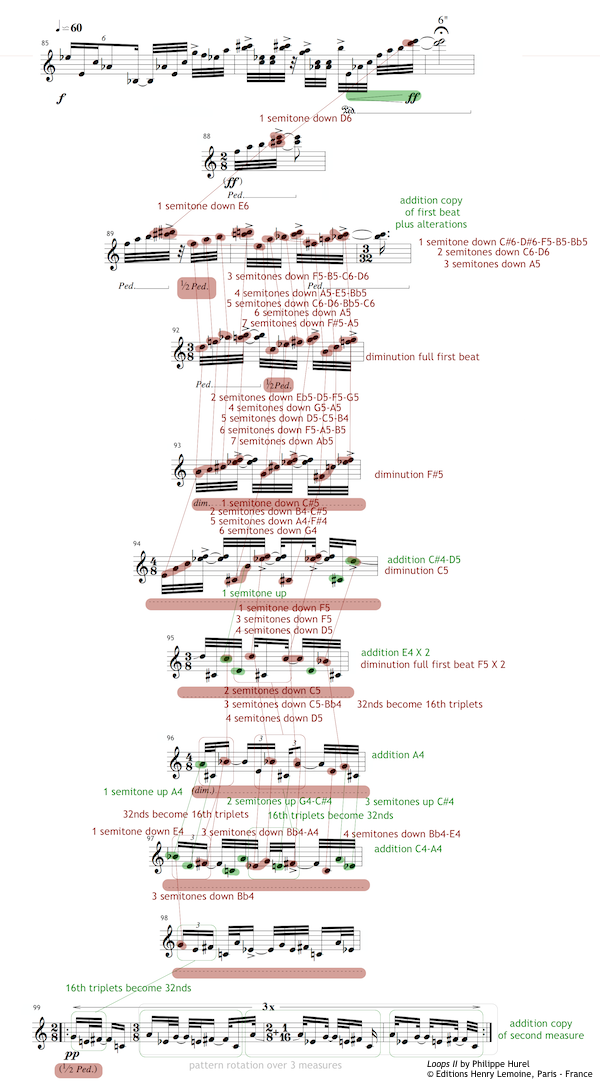Improving the practice and performance of contemporary music
Loop B - main motif - regressive period
Although there are quite some note-additions (especially between bars 96-97), the overall tendency in this period is toward note-diminution. The overall rhythm stays essentially the same, with some back and forth movement between 32nds and 16th triplets towards the end of the period. In general, dynamics evolve from fortissimo in bar 88 to pianissimo in bar 99. The accents that structure the beginning of the period are slowly abandoned towards the end of the period. The phrasing starts with some full pedals, but then remains 1/2 pedal throughout the rest of the period. The melodic curve evolves from a quite fluent ascending curve to a more capricious repetitive pattern at the end of the period.
The pedal use in bars 88 to 94 is marked with a bit more detail, but the effect of a brass section in a big band can be obtained if the pedal is applied in the following way: when the accentuated note has a length of a 32nd note (therefore when it is followed by a rest as well) it should be played quasi-secco, and when it is longer or slurred it gets a full pedal. In this way, the sound resembles trumpets opening and closing the bell while playing.
Bars 99 through 102 contain the residue. In this looping measure, the mallets can be positioned at the extreme inside edge of the bars, on top of the damper. By doing this, the sound becomes narrower and pp and the playing becomes more agile and groovy.
